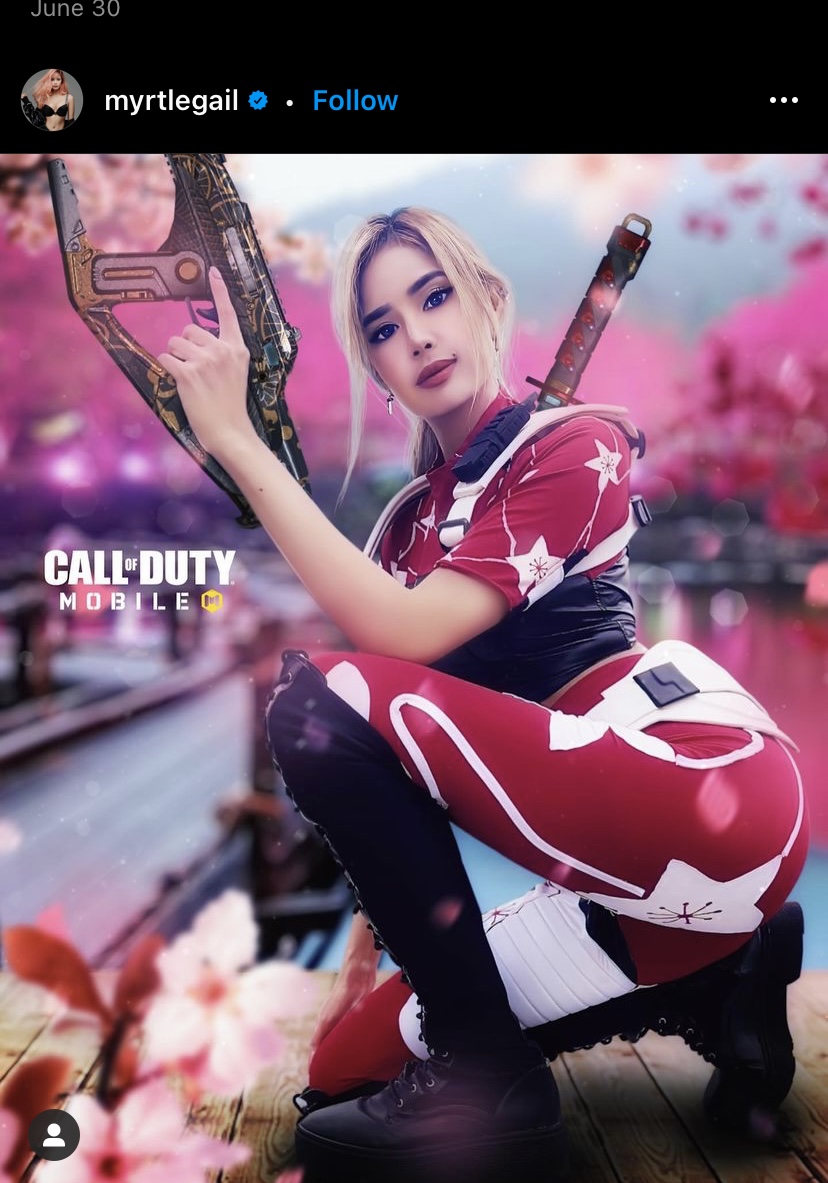Image Attribution: “Video Games and Cosplay” by Madeline is licensed under CC BY. (See interactive map)
This is a famous cosplayer who goes by the name Myrtle. She has a large Instagram following and is quite known within the cosplay community. Therefore, she gets paid sponsorships and advertises products. In this photo, she is dressed as a popular character in the “Call of Duty” video game. Her array signifies the idea that girls can play video games and that it isn’t exclusive to men. In this photo, her stance resembles a powerful aspect to her while holding weapons, which gives more to her influential persona. In this cosplay, her costume conforms to the sexualization of women, which will help the game get more attention. Sadly, without her tight clothing or weapons, her outfit wouldn’t get as much attention as she would like. Her attire is what contributes to the costume and gives it its attributions.
Within the Korean community, anime and videogame cosplay is very popular. Myrtle is dressed as the character “Naomi Muzishima,” who is one of the more popular female characters within the game. It would be difficult to distinguish who she perceives if you don’t play the game but would be very recognizable to those who participate. I believe the goal of this cosplay was to gain the attention of girls to draw them towards the game. Still, she ended up sexualizing herself, which is how females are represented within the video game community.
As I expressed before, this cosplayer is very known and shares a lot of her life on her Instagram. She didn’t show this cosplay at a convention or show; it was simply designed for the purpose of a sponsorship. If you scroll through her media, you can examine how she hyper-sexualizes herself and shows a lot of herself, which most women do in cosplay. In the article “Revealing Social Identity Phenomena in Videogames with Archetypal Analysis,” they discuss how they conducted an experiment where they allowed individuals to create videogame characters. They explained how their creations conformed to gender marginalization by creating women more sexually; men are more jacked, etc. The second scholar informed us that women are heavily sexualized within the videogame community, and it forces women to act as they are perceived. Both scholars discuss this and how exaggerated gender stereotypes are. This is very evident when you look at cosplayers, women are always conforming to the constructed feminine, and men are hyper-masculinized.
https://www.ceeol.com/search/article-detail?id=289532
https://instagram.com/myrtlegail?utm_medium=copy_link
